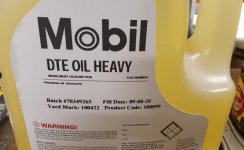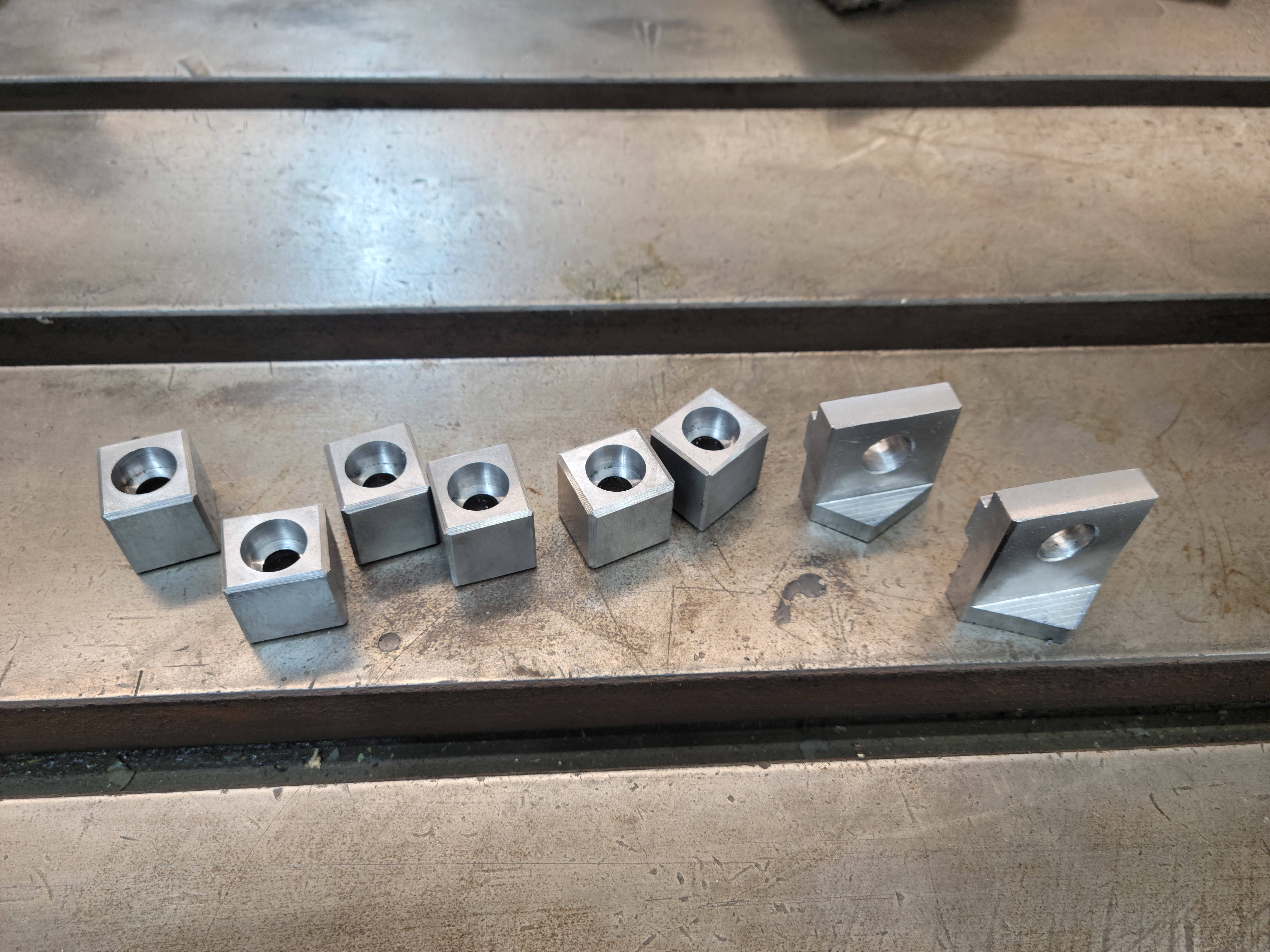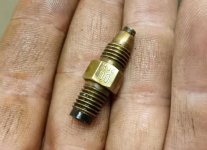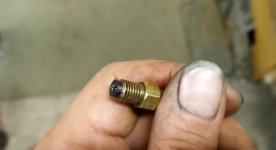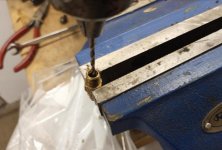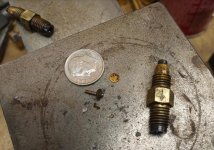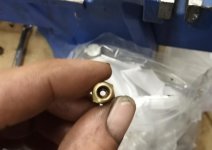texasgeartrain
Titanium
- Joined
- Feb 23, 2016
- Location
- Houston, TX
I'd need a pic to know exactly. But does it look like this:
D3174C - Bijur L5P-R One Shot Lubrication Pump - H & W Machine Repair
That link shows a clear plastic tank, mine is older and is aluminum. The pump itself is part of the oil tank. Oil tank can be removed from the pump. With tank off, you will probably see a felt filter in bottom of pump. Not sure your style filter, but they usually use felt. Could make your own if you have felt on hand, or buy a filter, if this is the style:
S109 - Bijur One Shot Filter Kit For Models L5H, L5P and L19P - H & W Machine Repair
The line at top of pump assembly. either remove it from pump, or the other end of line. Pump handle, what happens ? Oil should come out real easy. If not filter on pump is probably clogged.
There are bijur pop fittings. In theory they pop off at 5 or 10 psi. I hate them, because they have their own tiny filter which plugs up, plus a tiny internal spring assisted valve of sorts. Normally you replace them when they plug up. I personally gut them of the filter and valve. But to do that, you'd want to do all in the tree associated with them. If you have one bad one replace it. Those special fitting have sizes stamped on them like: 00
With the size, you order what you need, on this site they call them oil meter, scroll down:
Bijur Lubrication Products - H & W Machine Repair
If you did ever choose to gut the fittings, again you need to do all in same tree or oil line. An example here in post #170:
Oerlikon Italiana Milling Machine size "3", Model MN3H
If you can see the bijur pop fitting, in following the oil lines, then you dont need to tear machine apart. Just take it out. MAYBE the oil lines are plugged, but i'd start at the fitting. If the fitting is hidden, well. . . might have to find it.
If you dont have time to get into a teardown, dont. Use an oil can or something to shoot onto whatever is not getting oil, wipe it around, or whatever.
D3174C - Bijur L5P-R One Shot Lubrication Pump - H & W Machine Repair
That link shows a clear plastic tank, mine is older and is aluminum. The pump itself is part of the oil tank. Oil tank can be removed from the pump. With tank off, you will probably see a felt filter in bottom of pump. Not sure your style filter, but they usually use felt. Could make your own if you have felt on hand, or buy a filter, if this is the style:
S109 - Bijur One Shot Filter Kit For Models L5H, L5P and L19P - H & W Machine Repair
The line at top of pump assembly. either remove it from pump, or the other end of line. Pump handle, what happens ? Oil should come out real easy. If not filter on pump is probably clogged.
There are bijur pop fittings. In theory they pop off at 5 or 10 psi. I hate them, because they have their own tiny filter which plugs up, plus a tiny internal spring assisted valve of sorts. Normally you replace them when they plug up. I personally gut them of the filter and valve. But to do that, you'd want to do all in the tree associated with them. If you have one bad one replace it. Those special fitting have sizes stamped on them like: 00
With the size, you order what you need, on this site they call them oil meter, scroll down:
Bijur Lubrication Products - H & W Machine Repair
If you did ever choose to gut the fittings, again you need to do all in same tree or oil line. An example here in post #170:
Oerlikon Italiana Milling Machine size "3", Model MN3H
If you can see the bijur pop fitting, in following the oil lines, then you dont need to tear machine apart. Just take it out. MAYBE the oil lines are plugged, but i'd start at the fitting. If the fitting is hidden, well. . . might have to find it.
If you dont have time to get into a teardown, dont. Use an oil can or something to shoot onto whatever is not getting oil, wipe it around, or whatever.








